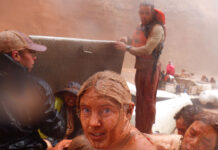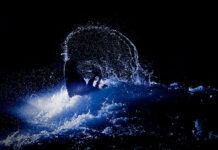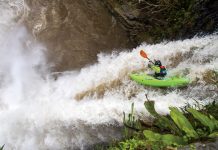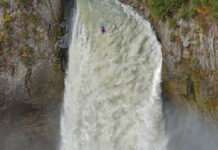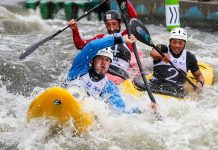I’m sitting in an eddy with a pang of anxiety swimming around the bottom of my chest. My brain is working at hyper speed, playing over every possible scenario that could happen once I peel out. I know this feeling well. I know the moves, and I know the longer I sit here, the louder the noise clouding my mind and body will become.
No matter how much I’ve improved in my 15 years of kayaking, sometimes it feels the same as the first day I sat my butt down in a boat.
A lot of what we challenge ourselves to do on the river is the exact opposite of what millions of years of programming has taught us. The result is this feeling of fear, something all whitewater paddlers can relate to. The good news is there are things we can do to make sure it doesn’t impact our paddling performance.
There’s a little part of our brain called the amygdala, nicknamed the “lizard brain.” It’s the automated command center for our body, using chemical and electrical signals to tell our bodies what to do when presented with a fight or flight scenario, such as unexpectedly flipping over in a kayak. It also stores all of our emotional memories, or fears for future use.
Picture the difference between a skilled paddler, taking calm, well-placed strokes, and a panicked boater with fear in his eyes, pad- dling frantically without getting where he wants to go. The panicked boater is controlled by the lizard brain, reacting automatically to his surroundings.
The unconscious and subconscious part of the brain that deals with programmed survival response is incredibly powerful, firing off around 60,000 neural impulses a second. The conscious part, or ability
to reason, however, fires off only about 60 impulses each second.
To fight this uphill battle and tame the lizard brain, we need to break things down so we have more time to process what is happening. A rapid that seems intimidating at first is much more approachable once picked apart into individual moves. A major difference between the panicked boater and the pro is the mental shift from undertaking an entire rapid at once to stringing together a series of attainable maneu- vers. Going from eddy to eddy gives us pause, or the ability to process each move individually.
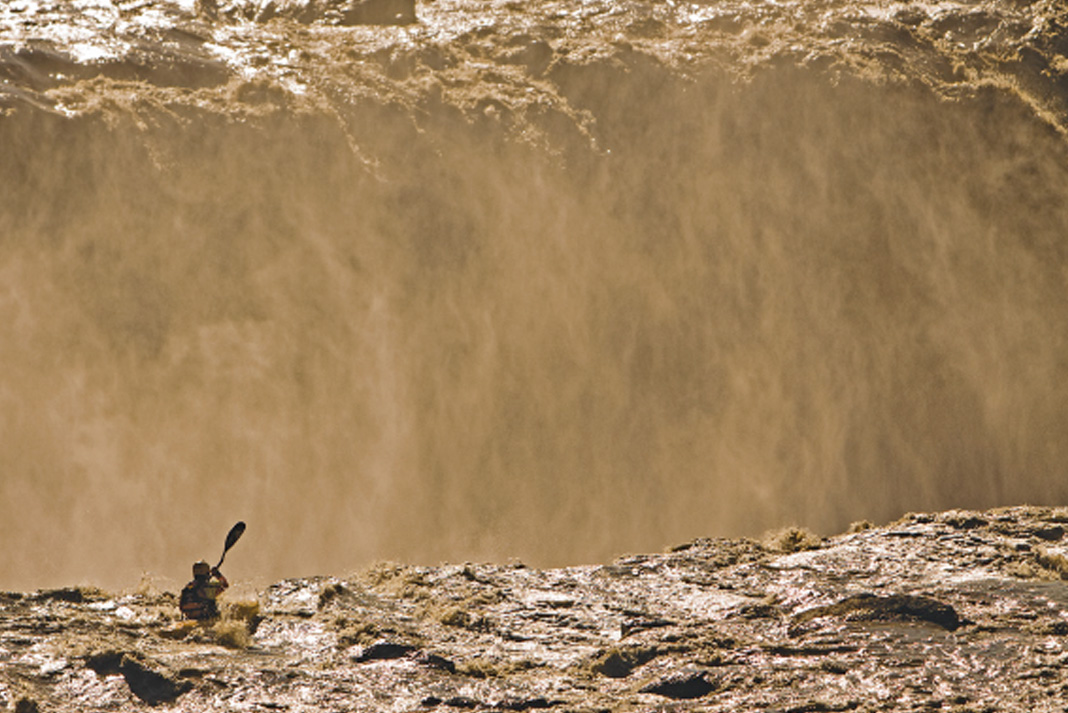
This alone is only part of the equation since there can be consequences downstream when we fail to execute moves as planned. I account for this by thinking through potential outcomes. If, before entering a rapid, I imagine the good, the bad and the ugly, those outcomes are less frightening because they don’t catch me off guard. This willingness to accept less than desirable outcomes is another key difference between staying focused and reverting to survival mode.
By acknowledging our fear, naming it and discussing it, we can reflect on whether or not our fears are reasonable to maintain. This lays the foundation for our inevitable swims and screw-ups to be positive learning experiences instead of memories that instill anxiety. I liken learning as a kayaker to a baby learning to walk—it won’t come without its stumbles and falls.
Chris Wing is the founder and president of H2o Dreams, and has been teaching all levels of kayakers for more than a decade.
 This article first appeared in the 2015 Paddling Buyer’s Guide. Subscribe to Paddling Magazine and get 25 years of digital magazine archives including our legacy titles: Rapid, Adventure Kayak and Canoeroots.
This article first appeared in the 2015 Paddling Buyer’s Guide. Subscribe to Paddling Magazine and get 25 years of digital magazine archives including our legacy titles: Rapid, Adventure Kayak and Canoeroots.



